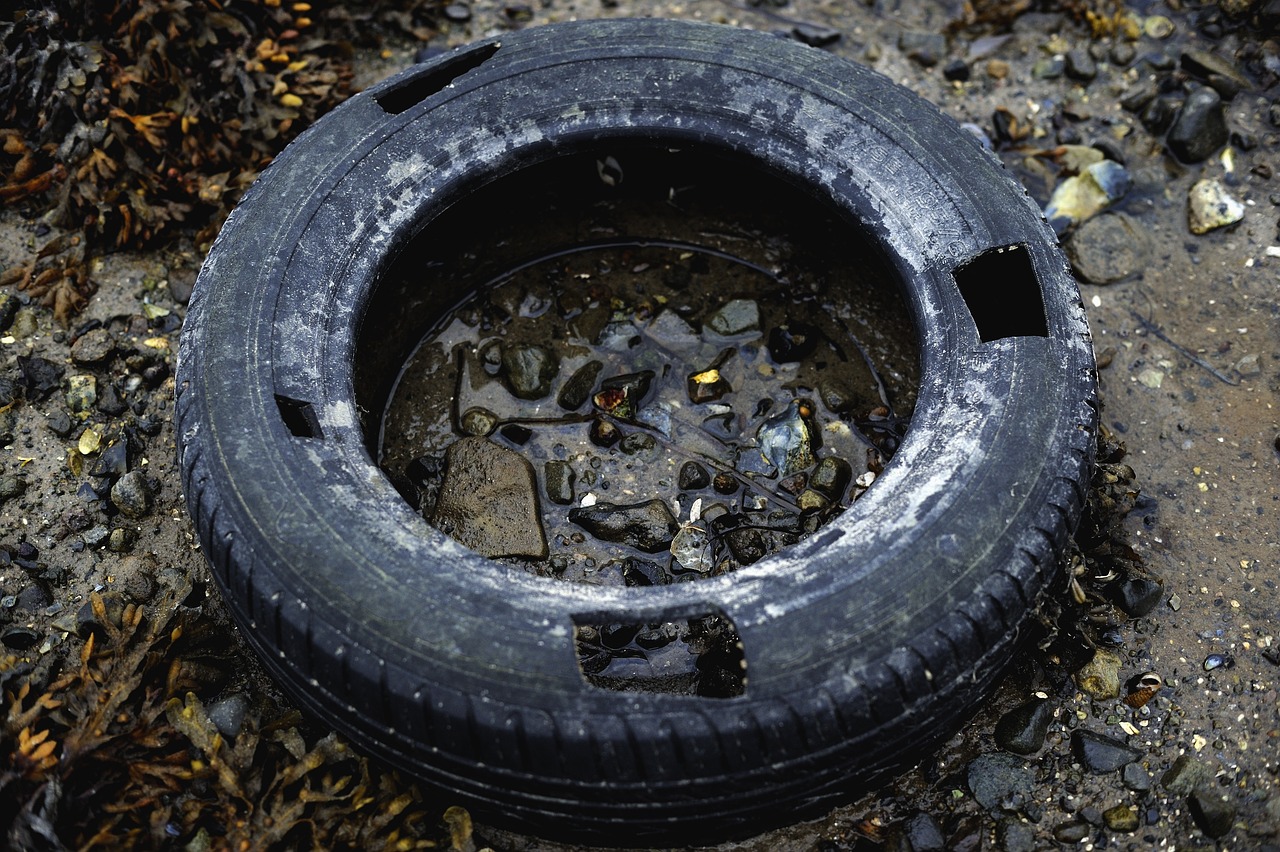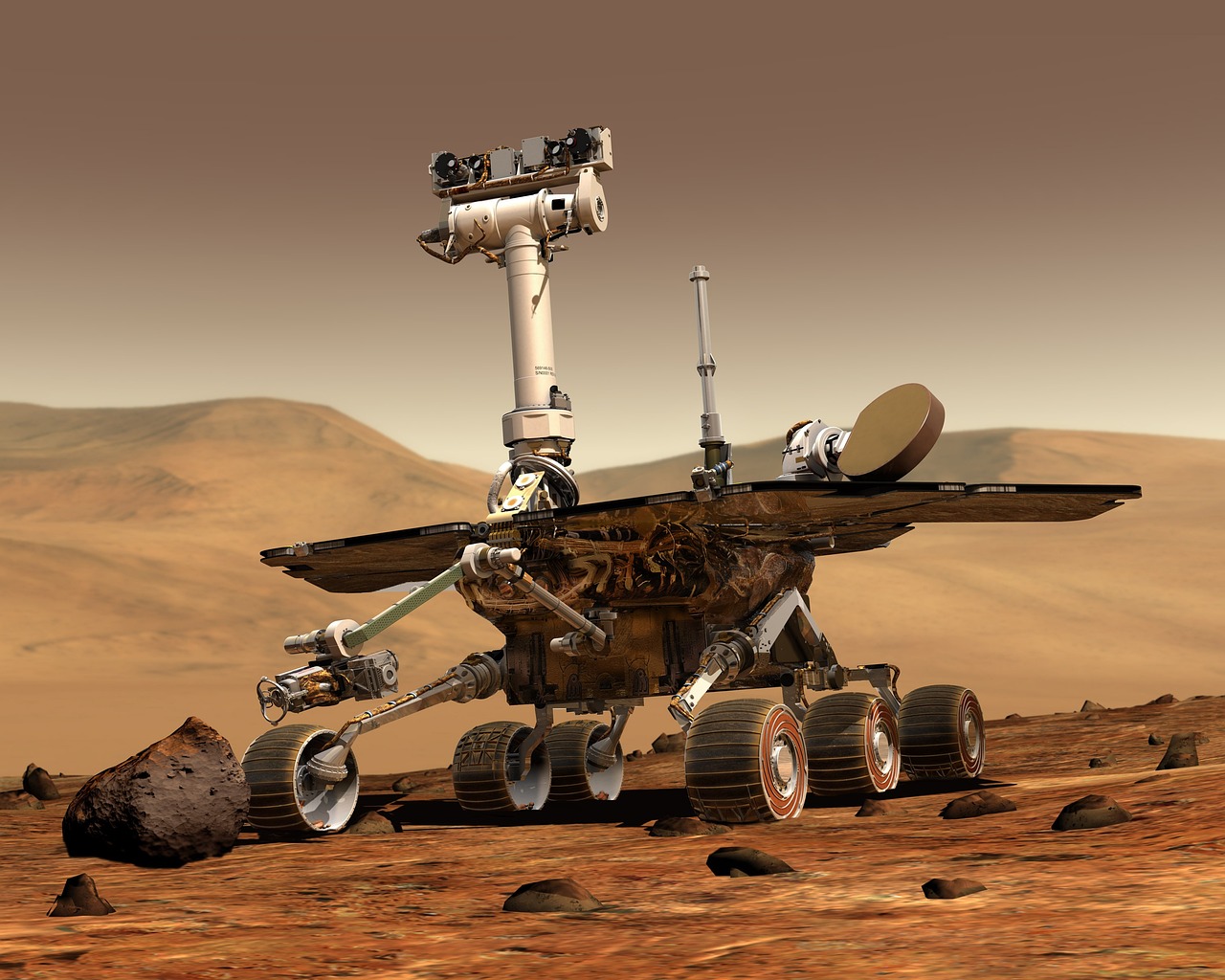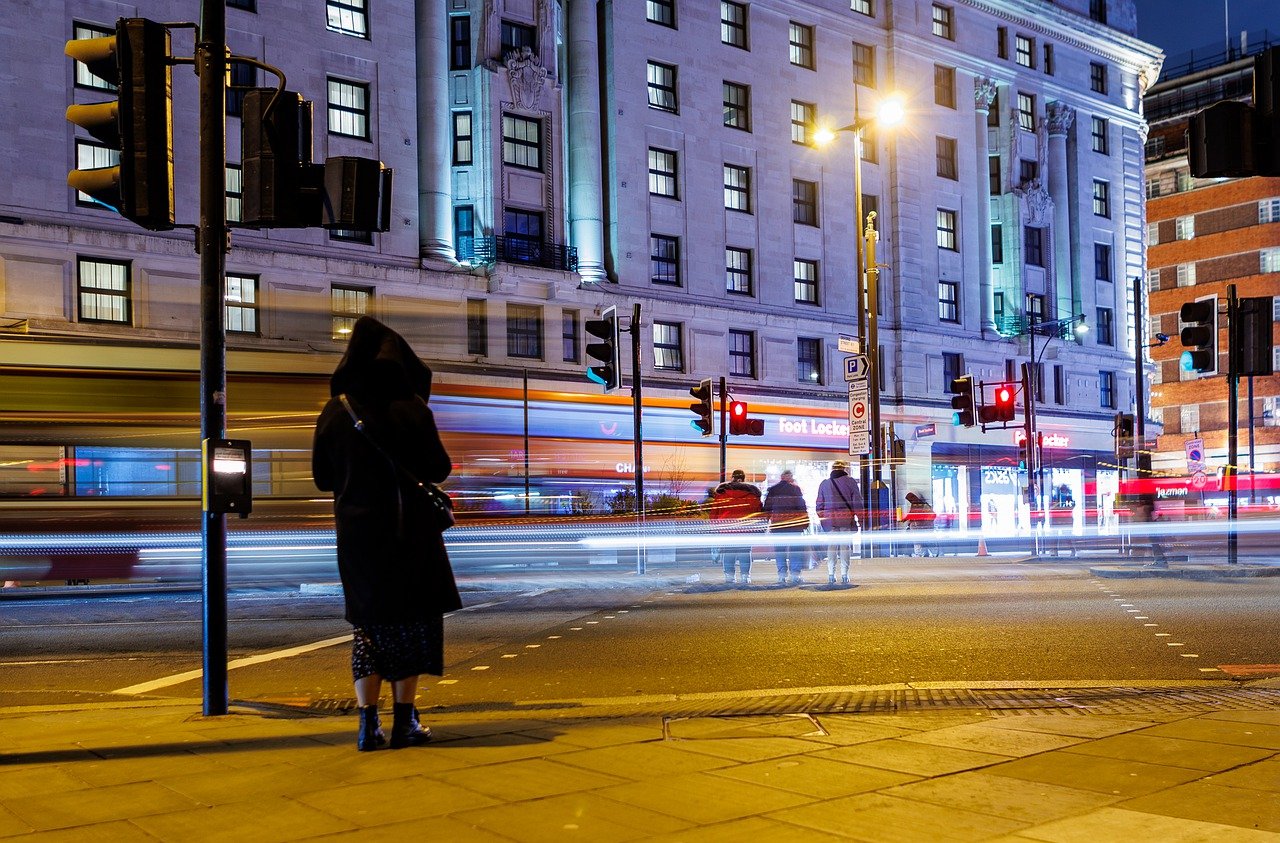Urban air pollution is more than just an environmental issue; it’s a pressing public health crisis that affects millions of people worldwide. Imagine stepping outside and being greeted by a thick cloud of smog instead of fresh air. It’s not just an inconvenience; it’s a reality for many urban dwellers. The need for innovative solutions has never been more urgent, and that’s where green technology comes into play. This article explores how these cutting-edge technologies are not just buzzwords but real solutions aimed at improving air quality in our cities.
Green technology refers to a broad spectrum of solutions designed with the environment in mind, focusing on sustainability and reducing our ecological footprint. With urban areas becoming increasingly populated, the sources of air pollution—like vehicle emissions, industrial discharges, and even household activities—are on the rise. The effectiveness of green technologies in tackling these issues is not just a theoretical concept; it’s something we can observe in real-world applications. From advanced air filtration systems to the creation of urban green spaces, these technologies are essential in the fight against air pollution.
But let’s not kid ourselves; implementing these technologies is not without its challenges. Financial constraints, technical limitations, and social acceptance are hurdles that need addressing. However, with the right policies and community engagement, we can turn these challenges into opportunities for innovation and improvement. By fostering a collaborative environment between governments, businesses, and citizens, we can pave the way for a cleaner, healthier urban landscape.
In the sections that follow, we’ll delve deeper into the specific technologies that are making waves in the fight against urban air pollution. We’ll explore innovative air filtration systems, the role of smart sensors, and the importance of renewable energy solutions. Each of these elements plays a critical role in creating a sustainable urban ecosystem. So, whether you’re a city planner, a concerned citizen, or just someone interested in how technology can improve our lives, this article is for you. Together, we can combat urban air pollution and breathe easier.

Urban air pollution is not just a minor inconvenience; it’s a serious threat to our health and the environment. Imagine walking through a bustling city, surrounded by towering buildings and the constant hum of traffic, only to realize that the air you’re breathing is laden with harmful pollutants. This scenario is all too common in many urban areas around the globe. The primary sources of urban air pollution include vehicle emissions, industrial discharges, and even household activities. These pollutants can manifest in various forms, including particulate matter (PM), nitrogen oxides (NOx), sulfur dioxide (SO2), and volatile organic compounds (VOCs).
Particulate matter, for instance, is a mixture of tiny particles and droplets in the air that can penetrate deep into the lungs and even enter the bloodstream. This can lead to a host of health issues, from respiratory diseases to cardiovascular problems. According to the World Health Organization, around 4.2 million premature deaths each year are linked to outdoor air pollution, highlighting the urgent need for action.
But what exactly are the effects of these pollutants on urban populations and ecosystems? The consequences are far-reaching and often devastating. Not only do they adversely impact human health, but they also contribute to environmental degradation. For example, acid rain, caused by sulfur dioxide and nitrogen oxides, can severely damage forests, lakes, and even buildings. Moreover, urban air pollution can exacerbate climate change, creating a vicious cycle that threatens our planet.
To better understand the complexity of urban air pollution, let’s take a look at a table that summarizes the primary pollutants, their sources, and their effects:
| Pollutant | Sources | Effects |
|---|---|---|
| Particulate Matter (PM) | Vehicle emissions, construction sites, industrial processes | Respiratory issues, cardiovascular diseases |
| Nitrogen Oxides (NOx) | Cars, trucks, power plants | Smog formation, respiratory problems |
| Sulfur Dioxide (SO2) | Coal-burning power plants, oil refineries | Acid rain, respiratory issues |
| Volatile Organic Compounds (VOCs) | Paints, solvents, gasoline | Smog formation, eye and throat irritation |
In summary, understanding urban air pollution is crucial for developing effective strategies to combat it. By recognizing the sources and effects of these pollutants, we can begin to appreciate the importance of implementing green technologies and policies aimed at improving air quality. It’s not just about cleaner air; it’s about creating healthier urban environments where communities can thrive. So, the next time you step outside, take a moment to think about the air you’re breathing and the steps we can take together to make it better.

In today's world, the **role of green technology** in combating urban air pollution cannot be overstated. As cities expand and industrial activities increase, the air we breathe is becoming more contaminated with harmful pollutants. Green technology provides innovative solutions that not only address these issues but also promote sustainability and environmental health. Imagine a city where the air is clean, parks are lush, and technology works hand-in-hand with nature. This is not just a dream; it’s a reality that can be achieved through the implementation of green technologies.
At its core, green technology encompasses a wide array of solutions designed to mitigate environmental impacts. From advanced air filtration systems to renewable energy sources, these technologies are engineered to improve air quality and reduce the carbon footprint of urban areas. For instance, consider the air filtration systems that utilize **high-efficiency particulate air (HEPA)** filters. These systems can capture 99.97% of particles that are 0.3 microns in size, effectively removing dust, pollen, and even some bacteria from the air. By integrating such systems into buildings and public spaces, cities can significantly reduce airborne pollutants.
Moreover, the advent of **smart sensors** has revolutionized how we monitor air quality. These devices provide real-time data about pollution levels, allowing city planners and residents to make informed decisions. For example, if a sensor detects a spike in particulate matter, local authorities can take immediate action, such as deploying air purifiers or advising residents to limit outdoor activities. This proactive approach not only helps in managing pollution but also empowers individuals to take charge of their health and environment.
Another critical aspect of green technology is the creation of **urban green spaces**. Parks, gardens, and even green roofs play a vital role in absorbing pollutants and improving air quality. Trees and plants naturally filter the air, absorbing carbon dioxide and releasing oxygen. They also provide shade and cooling, which can reduce the urban heat island effect, a phenomenon where urban areas become significantly warmer than their rural surroundings. Studies have shown that urban areas with more green spaces experience lower levels of air pollution and improved public health outcomes.
In addition to air filtration and green spaces, transitioning to **renewable energy** sources is essential. Solar panels, wind turbines, and other clean energy technologies not only reduce reliance on fossil fuels but also decrease the emissions that contribute to air pollution. For example, a city that invests in solar energy can significantly lower its greenhouse gas emissions, leading to cleaner air and a healthier population. The integration of renewable energy into urban planning is a crucial step towards a sustainable future.
In conclusion, the role of green technology in combating urban air pollution is multifaceted and crucial for the health of our cities. By embracing innovative solutions such as air filtration systems, smart sensors, urban green spaces, and renewable energy, we can create cleaner, healthier environments for ourselves and future generations. The question remains: are we ready to invest in these technologies and make our cities a better place to live?

When it comes to tackling urban air pollution, are at the forefront of the battle. These systems are designed not just to filter out dust and allergens, but also to capture harmful pollutants that can severely impact health and the environment. Imagine living in a city where the air is as clean as a mountain breeze—that's the promise of advanced filtration technology. But how do these systems work, and what makes them so effective?
One of the most notable technologies in this realm is the HEPA filter (High-Efficiency Particulate Air filter). HEPA filters are designed to trap 99.97% of particles that are 0.3 microns in diameter or larger. This means they can effectively capture dust, pollen, smoke, and even some bacteria and viruses. In urban settings, where air pollution can come from various sources—like vehicles, factories, and construction sites—HEPA filters act as a crucial line of defense. They not only improve indoor air quality but also contribute to a healthier urban environment.
Another fascinating technology is the electrostatic precipitator. This device uses electrical charges to remove particles from the air. It works by charging the particles as they pass through, then collecting them on oppositely charged plates. This method is particularly effective for capturing fine particulate matter and is often used in industrial applications. Imagine a giant magnet that not only attracts metal but also pulls in harmful pollutants—this is essentially what electrostatic precipitators do!
Moreover, there are also photocatalytic filters that utilize light to break down pollutants at a molecular level. These filters can decompose harmful compounds like volatile organic compounds (VOCs) and nitrogen oxides, which are prevalent in urban environments. When sunlight or artificial light hits these filters, it triggers a chemical reaction that transforms pollutants into harmless substances. It’s like having a mini air purification factory right in your home or office!
The effectiveness of these filtration systems can be enhanced when combined with smart technology. For instance, integrating air filtration systems with smart home devices allows for real-time monitoring of air quality. This means that when pollution levels rise, the system can automatically ramp up its filtration capacity, ensuring that the air remains clean and safe to breathe. Just think about it: a system that not only cleans your air but also adapts to your environment—how cool is that?
However, while these technologies offer promising solutions, they are not without their challenges. The initial cost of installation and maintenance can be a barrier for many urban dwellers. Additionally, the effectiveness of these systems can vary based on the specific pollutants present in different urban areas. This is where policy and community engagement come into play, as they can help facilitate access to these vital technologies.
In summary, innovative air filtration systems are a game-changer in the fight against urban air pollution. With technologies like HEPA filters, electrostatic precipitators, and photocatalytic filters, we have powerful tools at our disposal. But to truly make a difference, we need to combine these technologies with smart monitoring and supportive policies, paving the way for cleaner, healthier urban environments.

In the battle against urban air pollution, smart sensors have emerged as a game-changing technology, offering real-time data that can significantly enhance our understanding of air quality. Imagine walking through a bustling city and being able to pull out your smartphone to check the air quality index (AQI) right in your vicinity. This is not just a dream; it's the power of smart sensors at work. These devices are strategically placed throughout urban areas to monitor various pollutants, including nitrogen dioxide, particulate matter, and ozone levels, providing data that can be crucial for public health.
One of the most impressive aspects of smart sensors is their ability to deliver real-time monitoring. Unlike traditional methods that often rely on periodic sampling, smart sensors continuously collect data, allowing for immediate insights into air quality fluctuations. This capability is essential for informing both individuals and policymakers about pollution spikes, which can occur due to traffic congestion, industrial activities, or weather changes. The data collected can be visualized through mobile applications or web platforms, making it accessible to everyone. This transparency not only empowers citizens to make informed decisions about their outdoor activities but also encourages local governments to take timely action.
Furthermore, the integration of smart sensors with other technologies, such as Internet of Things (IoT) devices, can create a comprehensive air quality management system. For example, when pollution levels rise, smart sensors can trigger automated responses, such as adjusting traffic signals to reduce congestion or activating air purification systems in public buildings. This interconnected approach allows cities to respond dynamically to air quality issues, enhancing the overall effectiveness of pollution control measures.
However, while the potential of smart sensors is vast, several challenges remain. One significant hurdle is the cost of implementation. Deploying a network of smart sensors across an entire city can be financially daunting. Additionally, the maintenance of these devices and the need for reliable data transmission infrastructure can complicate matters. To tackle these challenges, governments and private entities must collaborate to explore funding opportunities and innovative business models that can support widespread adoption.
Moreover, public awareness and education play a crucial role in the success of smart sensor initiatives. If citizens understand how to interpret the data provided by these sensors, they can take proactive measures to protect their health. For instance, if a resident is alerted to high pollution levels, they might choose to limit outdoor activities or use air purifiers at home. Therefore, integrating educational programs that teach people about air quality and its implications is essential.
In summary, smart sensors and monitoring systems are pivotal in the fight against urban air pollution. They not only provide invaluable data for immediate action but also foster a culture of awareness and responsibility among citizens. As cities continue to embrace these technologies, the potential for cleaner air and healthier urban environments becomes a tangible reality.

Urban green spaces are more than just patches of grass in a concrete jungle; they are vital lifelines for our cities. Picture this: a bustling city filled with towering skyscrapers and honking cars, suddenly interrupted by a vibrant park filled with trees, flowers, and the laughter of children. These green oases play a crucial role in combating urban air pollution, offering a natural solution to a pressing problem. They act as lungs for our cities, absorbing carbon dioxide and releasing oxygen, which is essential for our survival.
But how exactly do these green spaces improve air quality? Well, they help filter out pollutants through a process called phytoremediation. Plants absorb harmful substances like nitrogen dioxide and particulate matter, effectively cleaning the air we breathe. Moreover, the presence of vegetation can lower temperatures in urban areas, which is significant because heat can exacerbate air pollution. This cooling effect reduces the formation of ground-level ozone, a harmful pollutant that affects respiratory health.
Beyond their environmental benefits, urban green spaces also enhance the overall quality of life for city dwellers. They provide recreational opportunities, promote mental well-being, and foster social interactions among community members. Imagine grabbing a coffee and enjoying a peaceful moment in a park instead of being surrounded by the noise and chaos of city life. This connection to nature is not just a luxury; it's a necessity for our mental health.
Despite their numerous benefits, creating and maintaining urban green spaces comes with challenges. Limited space, funding constraints, and competing land-use priorities can hinder the development of these vital areas. However, innovative solutions like vertical gardens and rooftop parks are emerging as effective alternatives to traditional green spaces. These options allow cities to maximize their greenery without sacrificing valuable land.
To further illustrate the importance of urban green spaces, consider the following table that outlines their key benefits:
| Benefit | Description |
|---|---|
| Air Quality Improvement | Plants absorb pollutants and release oxygen, enhancing urban air quality. |
| Temperature Regulation | Green spaces help cool urban areas, reducing heat-related pollution. |
| Mental Health Benefits | Access to nature promotes relaxation and reduces stress levels. |
| Social Interaction | Green spaces serve as community hubs, fostering connections among residents. |
In conclusion, urban green spaces are indispensable in our fight against air pollution. They not only improve air quality but also enhance our well-being and create vibrant communities. As cities continue to grow, prioritizing green spaces should be at the forefront of urban planning. After all, a city filled with greenery is a city filled with life!

Transitioning to renewable energy sources is not just a trend; it's a necessity for combating urban air pollution. In cities around the globe, the reliance on fossil fuels has resulted in a cocktail of harmful emissions that choke our atmosphere and threaten our health. But what if I told you that harnessing the power of the sun, wind, and other natural resources could be the game changer we desperately need? Renewable energy solutions offer a path toward cleaner air and a sustainable future.
Solar energy, for instance, is one of the most accessible forms of renewable energy. With the installation of solar panels on rooftops and in open spaces, cities can significantly reduce their dependence on coal and gas. Imagine a city where buildings are adorned with sleek solar panels, soaking up the sun’s rays and converting them into clean energy. This not only decreases the amount of carbon dioxide released into the atmosphere, but it also lowers electricity costs for residents. According to a recent study, cities that have embraced solar energy have seen a reduction in air pollution levels by up to 30%.
Wind energy is another powerhouse in the renewable sector. Urban areas can capitalize on wind farms located on the outskirts or even integrate small wind turbines into city infrastructure. These turbines can generate significant amounts of energy without emitting harmful pollutants. In fact, the American Wind Energy Association reports that wind energy has the potential to displace over 329 million tons of carbon dioxide annually in the United States alone. Think about the impact that could have on urban air quality!
| Renewable Energy Source | Benefits | Impact on Air Quality |
|---|---|---|
| Solar Energy | Reduces electricity costs, low maintenance | Decreases CO2 emissions by up to 30% |
| Wind Energy | Low operational costs, sustainable | Displaces 329 million tons of CO2 annually |
| Hydropower | Reliable, efficient energy generation | Reduces reliance on fossil fuels |
But it’s not just about solar and wind. Hydropower also plays a crucial role in the renewable energy landscape. By harnessing the power of flowing water, hydropower plants can generate electricity with minimal environmental impact. Urban areas near rivers can utilize this energy source to power homes and businesses, further reducing the reliance on fossil fuels.
However, transitioning to renewable energy isn't without its challenges. The initial investment can be substantial, and the infrastructure needs to be adapted to accommodate new technologies. Yet, the long-term benefits far outweigh these hurdles. Not only does renewable energy lead to cleaner air, but it also creates jobs and stimulates local economies. Cities that invest in green technologies are not just investing in their environment; they are investing in their future.
So, how can urban populations support this transition? By advocating for policies that promote renewable energy, participating in community solar programs, and even considering personal investments in solar or wind technologies, individuals can make a significant impact. The shift to renewable energy is not only a collective responsibility but also an opportunity for every citizen to contribute to a healthier planet.

When it comes to tackling urban air pollution, effective policy and regulation frameworks are absolutely essential. These frameworks create the necessary environment for the successful implementation of green technologies that can significantly reduce pollutants in our cities. Without strong policies, even the most innovative technologies may struggle to find their footing. Think of it like planting a garden; you need the right soil, water, and sunlight for the plants to thrive. In the same way, policies set the stage for green technologies to flourish.
Governments worldwide have started to recognize the importance of integrating environmental considerations into their legislative frameworks. This integration often includes a variety of measures aimed at reducing emissions, promoting renewable energy, and incentivizing the adoption of green technologies. For instance, many cities have enacted regulations that limit vehicle emissions, encourage the use of public transport, and support the development of clean energy sources. These regulations are not just about compliance; they are about fostering a culture of sustainability.
One of the most effective approaches to promoting cleaner air is through incentives. Financial incentives, such as tax breaks or grants for businesses and homeowners who invest in renewable energy systems, can accelerate the transition to cleaner technologies. Furthermore, cities can implement subsidies for public transportation systems, making them more attractive to residents. By making green options more financially appealing, we encourage people to make choices that benefit both their wallets and the environment.
However, policy alone isn't enough. It must be backed by robust enforcement mechanisms. This means that regulations need to be actively monitored and enforced to ensure compliance. For example, cities can establish air quality monitoring stations to regularly assess pollution levels and ensure that industries adhere to emission standards. The data collected can then be used to inform future policies and regulations, creating a feedback loop that continuously improves urban air quality.
Moreover, public engagement plays a crucial role in the effectiveness of these policies. When communities are involved in the decision-making process, they are more likely to support and comply with regulations aimed at reducing air pollution. This can be achieved through public forums, educational campaigns, and community-based initiatives that promote awareness about the importance of clean air. After all, it's the residents who will ultimately benefit from improved air quality, and their voices should be heard in shaping the policies that affect their lives.
In summary, the role of policy and regulation frameworks in combating urban air pollution cannot be overstated. They serve as the backbone for the adoption of green technologies, ensuring that cities can transition towards a healthier and more sustainable future. As we continue to innovate and develop new technologies, we must also advocate for policies that support their implementation, ensuring that our urban environments are not just livable, but thriving.

In today's fast-paced world, where urban air pollution is a pressing issue, public awareness and engagement play a crucial role in combating this challenge. It's not just about government policies or advanced technologies; it's about each one of us taking part in the solution. How can we make a difference? By understanding the problem and actively participating in initiatives that promote cleaner air and sustainable practices.
The first step towards effective engagement is education. Many people are not fully aware of the sources and impacts of air pollution. This lack of knowledge can lead to apathy. Therefore, community workshops, informational campaigns, and social media outreach can be powerful tools. For instance, organizing local events where experts discuss air quality issues can enlighten citizens about the importance of their role in reducing pollution. Imagine a neighborhood gathering where families learn how simple actions, like reducing car usage or supporting local green initiatives, can lead to a healthier environment. It’s like planting a seed of change that can grow into a forest of awareness!
Moreover, engaging the public can take many forms. Local governments and organizations can create interactive platforms where residents can report air quality issues or suggest improvements. This two-way communication fosters a sense of community ownership over local air quality. When people feel they are part of the solution, they are more likely to act. For example, cities could set up mobile apps that allow residents to monitor air quality in real-time and receive alerts when pollution levels are high. This empowers individuals to make informed decisions about their daily activities. It’s like having a personal air quality assistant right in your pocket!
Another effective strategy is collaboration with schools and educational institutions. Integrating air quality education into school curricula can inspire the younger generation to be proactive about environmental issues. Imagine students conducting projects on air pollution, leading campaigns in their communities, or even participating in tree-planting initiatives. These experiences not only educate but also instill a sense of responsibility towards the environment from an early age.
To further enhance public engagement, it’s essential to highlight the benefits of clean air. People are more likely to participate in initiatives when they see tangible advantages. For instance, cleaner air leads to better health outcomes, which can reduce healthcare costs. By presenting data and success stories—like cities that have significantly improved their air quality through community efforts—residents can visualize the positive impact of their involvement. Sharing success stories can be as motivating as a pep talk before a big game!
Lastly, fostering a culture of sustainability can create a ripple effect throughout the community. When individuals see their neighbors adopting eco-friendly practices, they are more likely to follow suit. Whether it’s using public transportation, biking, or simply planting a garden, these small actions contribute to a larger movement. Communities can organize challenges, such as “No Car Week” or “Green Your Block,” to encourage participation and make sustainability fun and engaging.
In conclusion, public awareness and engagement are vital components in the fight against urban air pollution. By educating communities, fostering communication, collaborating with educational institutions, and highlighting the benefits of clean air, we can inspire collective action. Remember, every little effort counts, and together, we can breathe easier!
| Question | Answer |
|---|---|
| What are some common sources of urban air pollution? | Common sources include vehicle emissions, industrial discharges, construction activities, and household products. |
| How can individuals help reduce air pollution? | Individuals can reduce air pollution by using public transport, carpooling, biking, conserving energy, and supporting local green initiatives. |
| Why is public engagement important in addressing air pollution? | Public engagement is crucial as it fosters a sense of community responsibility and encourages collective action towards cleaner air. |
| What role do schools play in promoting air quality awareness? | Schools can educate students about air pollution, engage them in projects, and inspire them to take action in their communities. |

When it comes to implementing green technologies to combat urban air pollution, the road is often bumpy. Despite their immense potential, several challenges stand in the way of widespread adoption. One of the most significant hurdles is financial. Many cities, especially those in developing regions, struggle with limited budgets. The initial costs of green technologies, such as advanced air filtration systems or renewable energy installations, can be daunting. It’s like trying to buy a luxury car when you can barely afford a used one. The upfront investment can be a deal-breaker, even when the long-term savings and benefits are clear.
Technical challenges also play a crucial role. Not all urban areas have the infrastructure necessary to support these technologies. For instance, implementing smart sensors requires not just the sensors themselves but also a robust data management system to analyze the information collected. It’s akin to having a state-of-the-art smartphone without a reliable network; without proper connectivity and support, it becomes nearly useless.
Moreover, there are societal barriers that can impede progress. Public perception and understanding of green technologies can vary widely. Many people are still unaware of how these technologies work or their benefits, leading to skepticism. Engaging the community and fostering a culture that embraces sustainability is essential. This is where education comes into play. Communities need to be informed about the importance of clean air and the role they can play in achieving it. After all, if you don’t understand why something is important, why would you bother to support it?
Additionally, regulatory frameworks can sometimes be a double-edged sword. While supportive policies can encourage the adoption of green technologies, overly complicated regulations can stifle innovation. Cities may find themselves tangled in red tape, making it difficult to implement new solutions quickly. This is particularly true in areas where bureaucracy is prevalent. For example, if a city wants to install a new type of air filtration system, it may have to navigate a labyrinth of permits and approvals that can take months or even years.
In summary, while the potential for green technologies to improve urban air quality is immense, the path to implementation is fraught with challenges. Financial constraints, technical limitations, societal attitudes, and regulatory hurdles all play a role. Addressing these issues requires a concerted effort from governments, businesses, and communities alike. Only then can we hope to create cleaner, healthier urban environments.
Urban air pollution primarily comes from vehicles, industrial emissions, construction activities, and household sources like heating and cooking. Each of these contributes harmful pollutants that can significantly impact health and the environment.
Green technology employs various innovative solutions such as advanced air filtration systems, renewable energy sources, and the creation of urban green spaces. These technologies work together to filter out pollutants, reduce emissions, and improve overall air quality in urban areas.
Innovative air filtration systems include technologies like HEPA filters and electrostatic precipitators. These systems are designed to capture a wide range of airborne particles, helping to purify the air in homes, offices, and public spaces, thereby reducing exposure to harmful pollutants.
Smart sensors provide real-time data on air quality, allowing for continuous monitoring of pollution levels. This information helps inform policies and individual actions, ensuring that residents are aware of air quality and can take necessary precautions to minimize exposure.
Urban green spaces, such as parks and vertical gardens, play a crucial role in improving air quality. They absorb pollutants, produce oxygen, and enhance biodiversity, creating a healthier urban environment for residents to enjoy.
Transitioning to renewable energy sources like solar and wind is vital for reducing urban air pollution. These clean energy technologies produce little to no emissions, helping to lower the overall pollution levels and improve air quality in cities.
Effective policy frameworks are essential for supporting the implementation of green technologies. This includes regulations, incentives, and government involvement that promote cleaner air initiatives and encourage communities to adopt sustainable practices.
Raising public awareness about air pollution and green technology is crucial. Engaging communities through educational campaigns, workshops, and local initiatives can foster a sense of responsibility and encourage sustainable practices that contribute to cleaner air.
Despite their potential, various challenges hinder the widespread adoption of green technologies. Financial constraints, technical limitations, and societal barriers must be addressed to ensure effective implementation and maximize the benefits of these innovations.